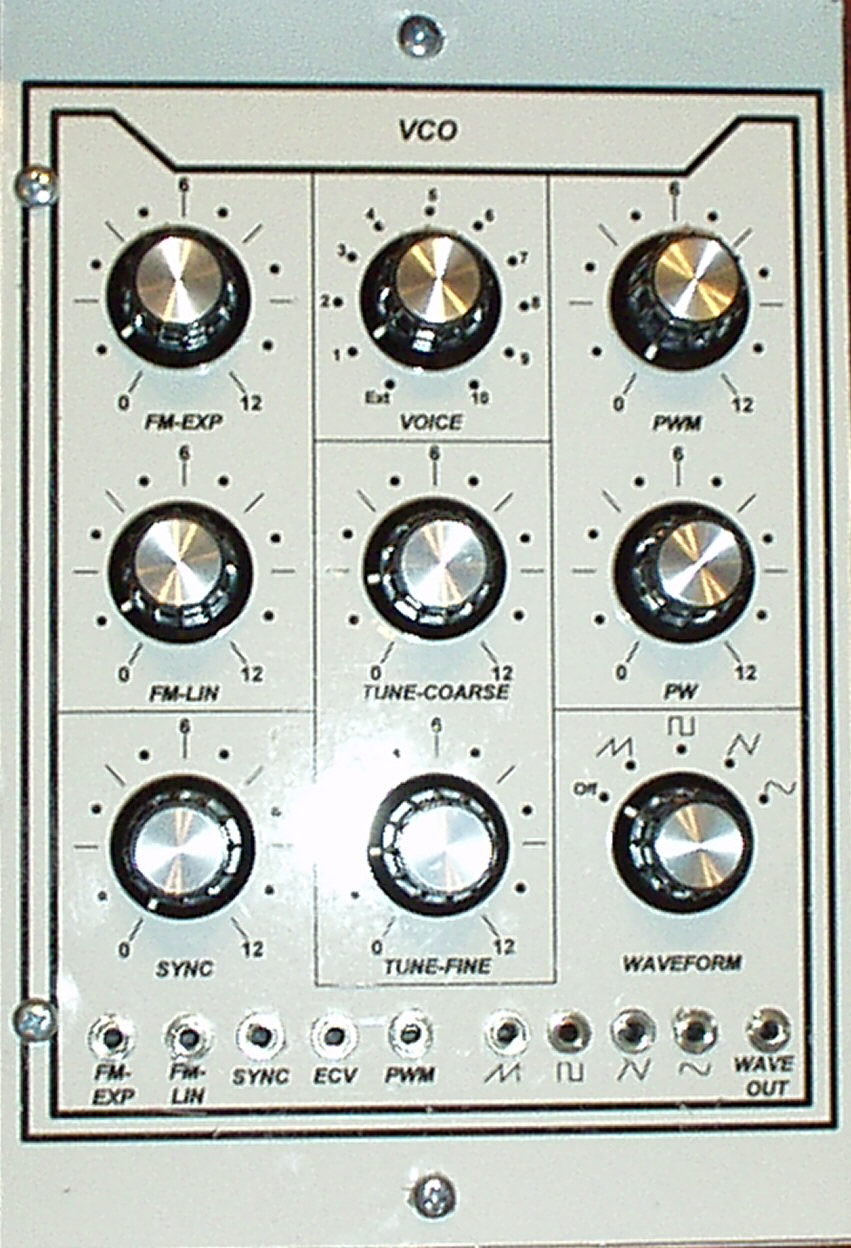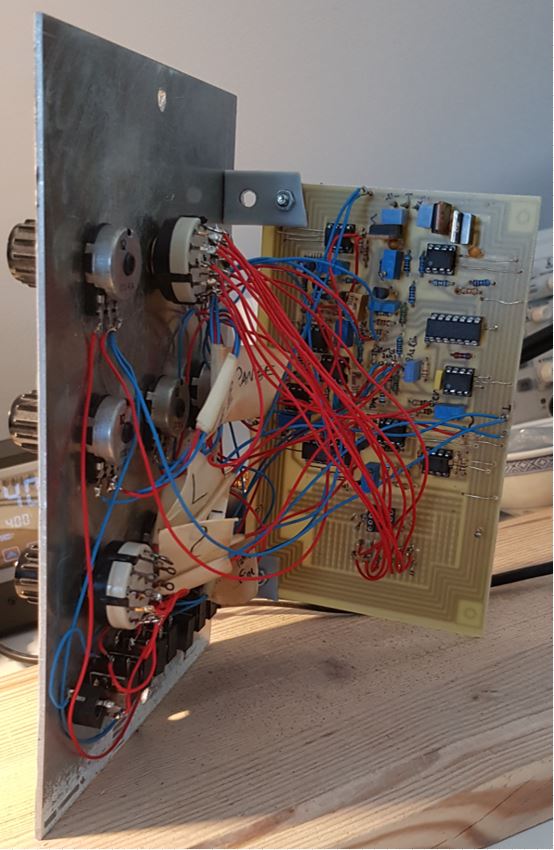
The VCO creates the basic waveforms sawtooth (falling ramp), triangle, square and sine. The sawtooth can be distorted by a pot adjustable SYNC input. The pulse width of the square wave can be modulated by a pot adjustable PWM input or by hand (PW pot). The entire VCO can be tuned by the pots TUNE-COARSE and TUNE-FINE and can be frequency modulated by the pot adjustable FM-LIN and FM-EXP inputs.
Each basic waveform has its own output connector and can be put on a different one via selection switch.
Schematic:
The schema is part of the book "Formant Pro MSS 2000" by H.J. Helmstedt and is based on the ELEKTOR FORMANT VCO circuit. I added a voice selection for polyphonic mode.
Sound example:
Two VCOs detuned by one octave with triangle output.
Reproduction hints:
1.) Chip heater:
- The trim pot placed before the external transistor of the heating circuit has to be 470k instead of 100k to reach 1.6 or 2.4 volts at the measure point (collector of external transistor).
- According to the book the heater works with 1.6 volts at measure point, but in my VCOs I had to use 2.4 volts to activate the regulation of the circuit.
2.) Sawtooth circuit:
- The amplitude of the sawtooth reached only 1 volt, so I removed R13 (330 Ohm) to make the discharging transistor TR3 open wider for better discharge of C3. Then I inserted an additional 100k resistor in the feedback loop of opamp 2 to get a final sawtooth amplitude of 3.3 volt.
3.) Triangle waveshaper:
I had to replace R33 (47k) with a 10k resistor to get also the increasing half of the triangle wave.
